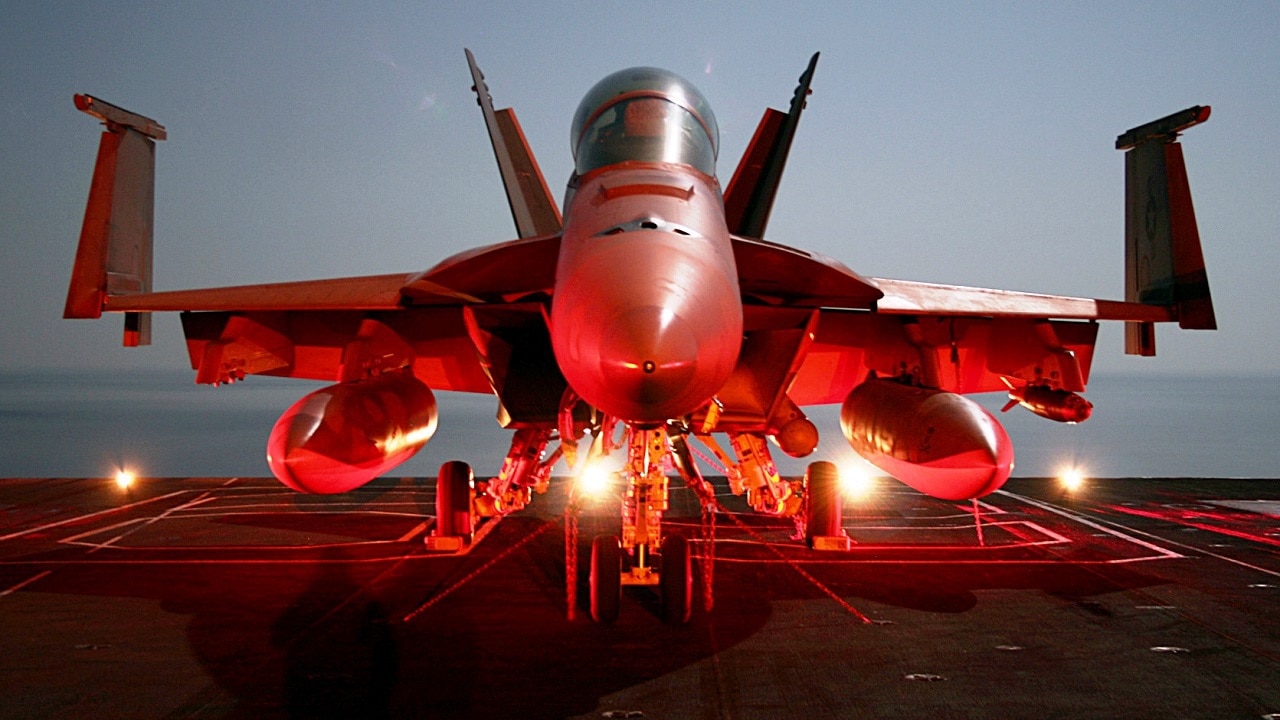The F/A-XX must be able to fight from range to ensure that U.S. Navy aircraft carriers aren’t attacked and destroyed by Chinese long-range anti-ship missiles like the DF-21D and DF-26.
With development underway on the Navy’s next-generation fighter, currently known simply as F/A-XX, the very makeup of America’s seaward branch may be resting on its still-forming wing roots. Among the long list of capabilities that the Navy would like to see in this new fighter field, there’s one that may literally dictate the relevance of America’s most expensive warfighting platforms for decades to come: the Navy’s fighters are in serious need of a big boost in range.
As tensions continue to rise between the United States and China in the Pacific, America’s multi-billion dollar carriers are often called upon to serve as they always have — as a looming American presence in far-flung areas of the globe; the proverbial Big Stick meant to compliment America’s diplomatic efforts in other arenas. But for all the power these floating airstrips can bring to bear, these cities on the sea are currently staring down the barrel of a significant capability gap presented by Chinese forces. Their primary offensive capabilities come via the dozens of Joint Strike Fighters and Super Hornets carried onboard, and not one of them could reach Chinese targets if a fight were to break out today… At least, not without putting the carriers themselves at risk of being lost.
In order to keep America’s flat-tops in the fight, there’s one thing the Navy’s new F/A-XX fighter has to bring with it into service: a massive increase in operational range over both the F/A-18 Super Hornet and the F-35C Joint Strike Fighter. To make matters worse for the engineers trying to solve this problem, that boost in range will need to come from what’s likely to be a larger aircraft that the Navy wants to pull more speed out of as well.
The Navy’s F/A-XX strike fighter is being developed within the branch’s Next Generation Air Dominance program, which shares a name (and likely some systems) with the Air Force’s efforts to develop and field a new air superiority fighter itself. But sharing an acronym and some modular capabilities appears to be as far as these programs go—with each branch developing its own advanced aircraft intended to meet their respective needs. And while range is certainly a consideration for the Air Force effort, the Navy has made it clear that it’s a priority for theirs. Alongside range, the Navy also wants to prioritize speed and weapon-carrying capacity.
This pressing need was highlighted in a recent Navy document entitled, “Navy Aviation Vision 2030-2035,” the branch released in October of 2021.
“Its specific capabilities and technologies are under development, however analysis shows it must have longer range and greater speed, incorporate passive and active sensor technology, and possess the capability to employ the longer-range weapons programmed for the future,” the document says of F/A-XX.
China’s anti-ship arsenal is no joke
China’s rapid military modernization and expansion in recent years have largely been focused on establishing the nation as the dominant power within the region. With a total naval roster that now exceeds 770 sizeable ships with varying degrees of armament and a rapidly growing diesel-powered carrier fleet, China’s seafaring forces may still qualify as a “green water” Navy, but within those green waters, it has few—if any—peers. But while their numerical advantage certainly poses a threat to America’s Navy, it’s the nation’s missiles, not its ships, that now place the future of America’s Nimitz and Ford-class supercarriers in jeopardy.
China has invested heavily in long-range anti-ship missile systems, including the nation’s operational hypersonic ship-hunting weapon, the DF-ZF, carried aloft by the solid-fuel, medium-range DF-17 ballistic missile. Other Chinese anti-ship weapons of note include the DF-21D medium-range anti-ship ballistic missile (ASBM) and the DF-26 intermediate-range ASBM.
Like all ballistic missiles, these weapons are also capable of achieving hypersonic velocities (though without the same degree of maneuverability required of modern hypersonics). The DF-21D, for instance, is claimed to reach Mach 10 before deploying its warheads. While these missiles may technically be easier to intercept than the DF-ZF, in sufficient volume, practically any well-targeted missile attack becomes impossible to defend against. Saturation attacks of those kinds are not always a cost-effective or sustainable approach to warfare, but American aircraft carriers, which take years to construct and cost more than $10 billion to replace, are exactly the sort of target even accountants could support throwing a few hundred million dollars worth of hardware at to bring down. In terms of cost, a lost carrier far outweighs the price of any expended munitions.
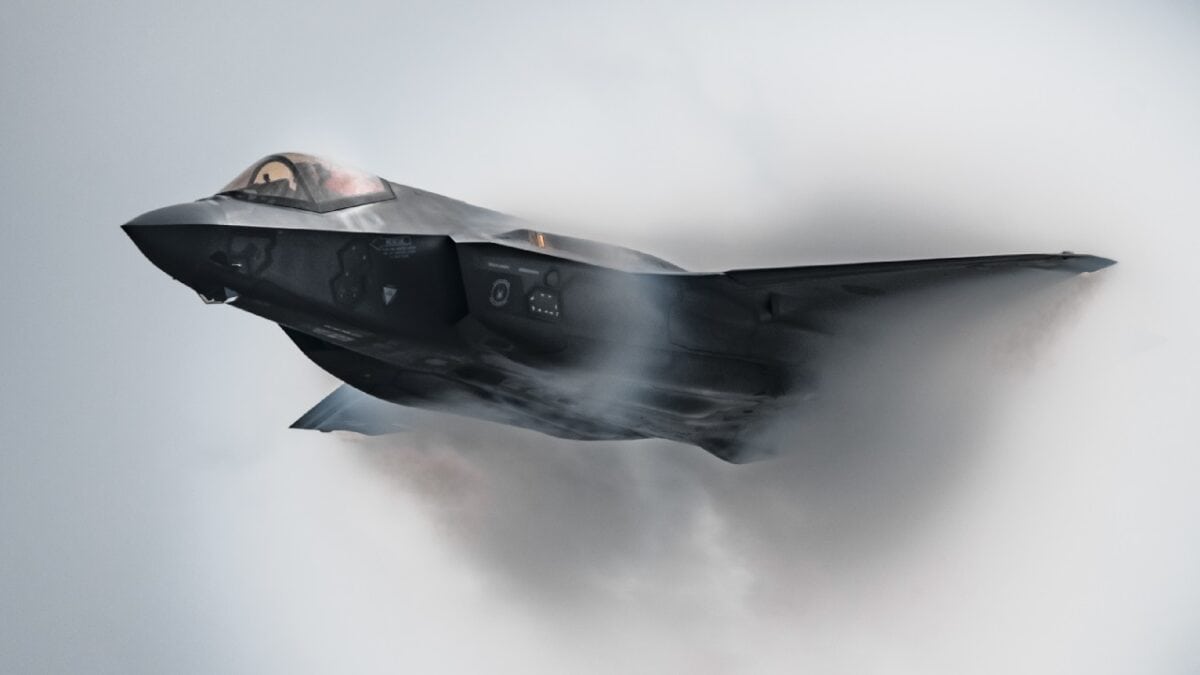
U.S. Air Force Maj. Kristin “BEO” Wolfe, F-35A Lightning II Demonstration Team commander and pilot, flies during a demonstration rehearsal at Hill Air Force Utah, Jan 20, 2021. The F-35A Lightning II Demonstration Team is part of the 388th Fighter Wing, and routinely flies over the Hill Air Force Base to practice and prepare for upcoming air shows around the world. (U.S. Air Force photo by Staff Sgt. Thomas Barley)
It’s important to note that, while these missiles can carry both conventional and nuclear payloads, the sheer kinetic force of a Mach 10 impact would be enough on its own to sink many ships. When coupled with an explosive warhead, such a weapon could conceivably take even a massive supercarrier out of the fight with a single (and maybe a bit lucky) shot.
The range of China’s various anti-ship weapon systems, some of which claim to reach as far as 1,800 miles or more, has created what’s commonly known as an area denial bubble extending out over the open waters of the Pacific. Sailing a ship inside this bubble during a time of conflict would immediately place it at risk of being targeted, with the chances of a successful hit increasing the closer the ship sails to Chinese shores.
At thousand-mile ranges, targeting is no simple enterprise. Even a massive aircraft carrier is a very small (and moving) target against the sprawling backdrop of the Pacific. There have been some positive assessments of the accuracy of China’s anti-ship weapons, however, and it seems increasingly likely that the nation may be able to effectively target a vessel at ranges in excess of a thousand miles in the future (though it’s unclear if past tests have been against a moving target at that range). China is already testing supersonic drones to locate and transmit targeting data back to anti-ship missiles, in conjunction with satellite intelligence and a variety of other surface and airborne sensors.
It’s all but certain that China will continue to work toward developing a robust kill chain for these long-range weapons. So, even if China couldn’t target a carrier at 1,000 miles today, the U.S. Navy has to operate under the assumption that this is one nut they’re likely going to crack eventually.
And that means the Navy must plan to keep its flat tops at least a thousand miles away from Chinese shores in any potential fight… which creates a serious problem in terms of offensive capability.
The Navy’s current fighters put its carriers at risk
The Navy’s current Block II Super Hornets have a combat radius of approximately 500 miles while carrying a full weapons payload. That means these jets can take off from a carrier, fly 500 miles to engage a target, turn tail, and fly 500 miles back to their ship.
The Block III variant of these fighters was meant to add conformal fuel tanks (additional fuel tanks that hug the fuselage of the aircraft) which would allow them to carry 3,500 pounds of additional fuel, increasing their range by approximately 300 miles, or their combat radius by 150. Unfortunately, these plans were placed on hold last year, though even if they hadn’t been, it would still only extend the Super Hornet’s combat radius to approximately 650 miles.
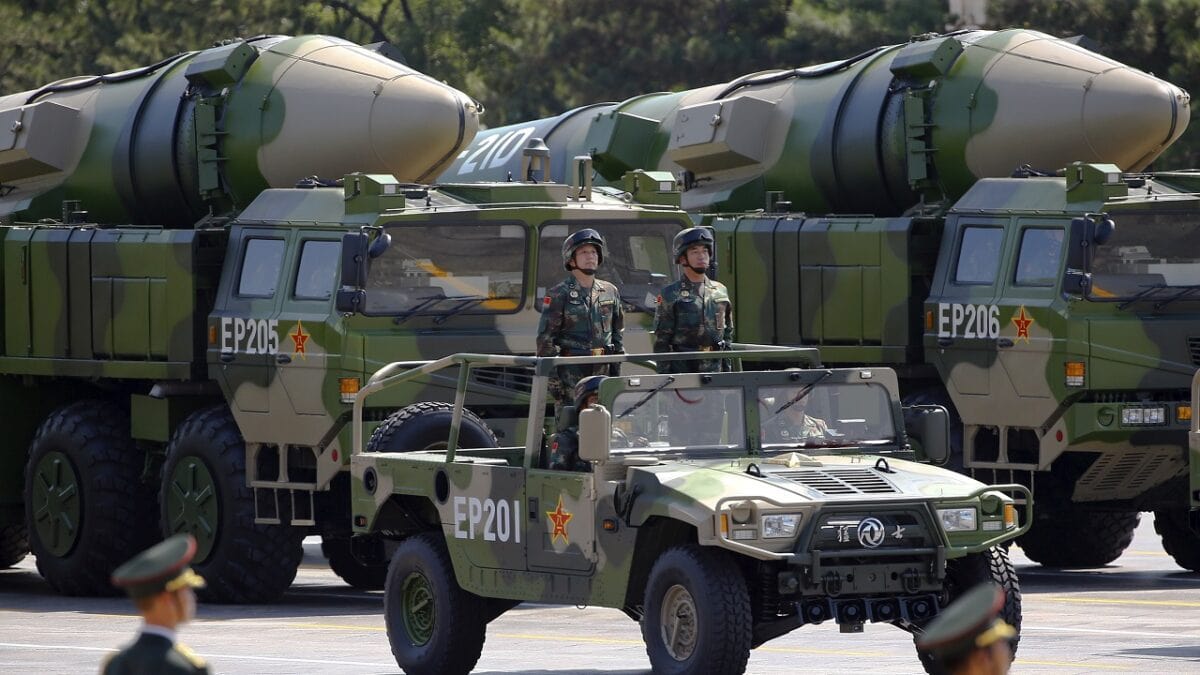
Military vehicles carrying DF-21D ballistic missiles roll to Tiananmen Square during a military parade to mark the 70th anniversary of the end of World War Two, in Beijing, China, September 3, 2015. REUTERS/Damir Sagolj
The F-35C Joint Strike Fighter (carrier variant) has the largest fuel stores of the JSF family, touting a combat radius that may extend as far as 670 miles under the right conditions. Again, that mark falls well short of the range engulfed by China’s area denial bubble, extending some 1,000 to 1,200 miles from shore or further.
This means that, in a best-case scenario, the U.S. Navy would have to sail its carriers about 650 miles off the Chinese coast to be able to target shoreline assets, placing it well within range of Chinese anti-ship weapons.
The Navy’s efforts to stretch its fighters’ legs may not be enough
There are a number of efforts aimed at offsetting this range gap already underway, including the development of a carrier-based drone refueler called the MQ-25 Stingray. On August 30, 2018, the U.S. Navy awarded Boeing an $805 million contract to continue development on the platform, and the drone took its first test flight just over a year later in September of 2019.
The Navy intends to purchase a total of 76 Stingrays, and according to the Pentagon, they may be able to extend the range of carrier-based aircraft by as much as 400 miles. This increase in range is substantial–and has often been touted by Navy officials as a means to extend its fighter range to the four-digit mark. However, it’s important to consider where this refueling would have to take place. The MQ-25 is intended to be able to deliver fuel to fighters as far as 500 miles from its launching carrier.
It’s important to consider how the location of refueling operations can telegraph the intent of combat operations or potentially highlight the presence of stealth fighters on enemy radar scopes. But for the sake of simplicity, we’ll leave that part of mission planning out of this hypothetical situation.
Using the MQ-25 for refueling would mean that an F-35C taking off at 1,000 miles from target could top off at 500 miles, putting it back at a full tank of gas — which is good for around 1,300 miles in a best-case scenario. From that 500-mile point, the F-35C would need to cover 500 miles to target and then 500 miles back into MQ-25 refueling range — or about 1,000 miles. In this drastically over-simplified scenario, the F-35C could feasibly engage targets at the 1,000-mile range or even slightly further, but this hypothetical scenario is extremely optimistic. Real aircraft very rarely operate at the outermost limits of their fuel range and the Navy has no illusions about that.
According to an interview Vice Admiral Mike Shoemaker did with Ward Carroll for Proceedings, the MQ-25 will extend fighter ranges by 300 to 400 miles at best.
“The MQ-25 will give us the ability to extend the air wing out probably 300 or 400 miles beyond where we typically go,” Shoemaker said.
It’s also important to note that 1,000 miles is potentially still within targeting range for some Chinese anti-ship weapons. In other words, the margin for error would likely be extremely thin.
To be clear once more, this is an extremely oversimplified example, but does well to demonstrate the complexity of the challenge.
The Marines and Air Force can offer bandaids, but the F/A-XX needs to offer a cure
Other efforts, like the Marine Corps’ Lighting Carrier concept of using amphibious assault ships to deploy short take-off, vertical landing (STOVL) F-35Bs from closer ranges, can also help to distribute the risk. But it stands to reason that losing one of these vessels packed to the gills with F-35s isn’t a very palatable idea either. A smaller ship does make effective targeting even more difficult at long ranges, but the F-35B has the smallest fuel capacity of the JSF family, with a combat radius of just better than 500 miles — forcing these vessels to sail even closer to enemy shores to operate.
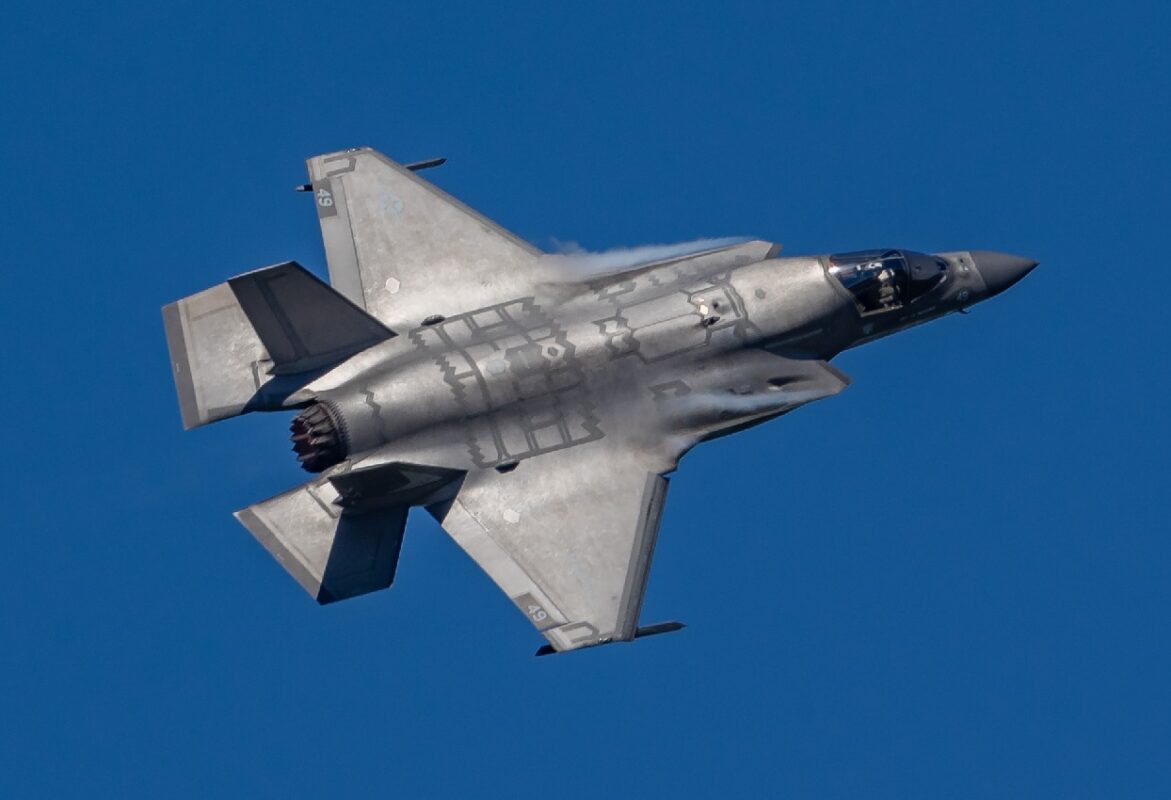
Lockheed Martin Aeronautics Company – Fort Worth – Todd McQueen
Subject: 2021 MCAS Cherry Point Air Show
FP#: 21-13105
POC: Brooke Whittaker
Other info: North Carolina; F-35B Demo Team; airshow; September 25-26, 2021
Other efforts include creating austere airstrips for F-35Bs on landmasses inside China’s area denial bubble. These hastily cleared airports would allow heavy lift helicopters to deliver fuel and ordnance for F-35Bs to land, resupply, and take off once again. However, these hasty airstrips, like a stationary aircraft carrier, would have a short shelf-life within the scope of China’s ballistic missile arsenal and large Naval presence. Like the Fulda or Suwalki Gap strategies in Europe over the past half-century, this approach would be sure to incur losses.
The two most potent potential solutions to this range problem that doesn’t involve a new fighter both come from the Air Force. The first is the integration of the Air Force’s AGM-158B JASSM-ER (Joint Air-to-Surface Standoff Missile-Extended Range) into the Navy’s Super Hornet and F-35C arsenals. With a range of 620 miles, these low-observable cruise missiles could offset the range limitations of both fighters — but because of the size of these weapons, they can’t be carried internally by the F-35, compromising its stealth advantage and increasing the chances of intercept.
The Air Force’s existing fleet of B-2 Spirits, and particularly its forthcoming fleet of B-21 Raiders may be the most effective solution to the Navy’s woes. With accurate intelligence regarding the placement of long-range anti-ship systems, strategic stealth bombers flying out of the United States could fly ahead of a carrier strike group, wiping out known systems to reduce the efficacy of China’s area-denial approach.
All of these efforts, however, amount to band-aids, rather than a cure for the Navy’s carrier troubles.
The F/A-XX will need to carry a ton of fuel, but new engines can help
In order to keep America’s carriers outside the reach of Chinese defenses, the F/A-XX fighter will need to offer at least a 1,000-mile combat radius, but that’s no small undertaking. That range would represent an increase of just under 50% over the F-35C, whereas an even-better 1,200-mile combat radius would mean a bit less than an 80% jump.
The F-35C operates with 19,200 pounds of fuel carried internally when fully gassed up, accounting for nearly a third of the aircraft’s total maximum takeoff weight (and about the same as a dry F-16 weighs in itself). To extend the F-35C’s combat radius to 1,000 miles, it would need to carry 9,600 pounds of additional fuel — about the same as adding a 2021 Nissan Titan pickup truck to that F-16 already stuffed into the fuselage.
Carrying all this additional weight would actually mean needing even more fuel, however, in order to propel the added mass. The F/A-XX would, as a result, need to be significantly larger than the F-35C or the F/A-18 it’s slated to replace.
However, the use of next-generation adaptive cycle engines, like GE’s XA100 currently in testing, could offer a whopping 30% increase in range over existing engine designs, which could dramatically reduce the fuel storage requirements for the F/A-XX. In fact, incorporating these engines into the F-35C could bring it close to the 1,000-mile mark itself.
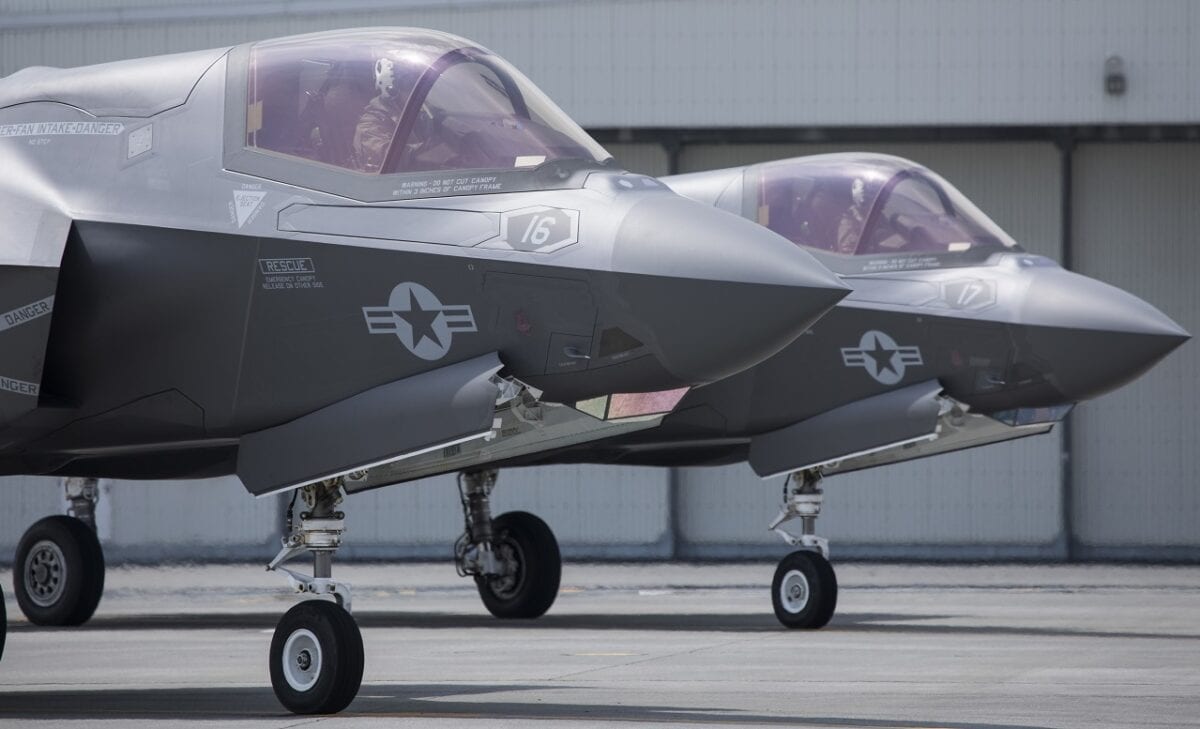
U.S. Marine Corps F-35B Lightning ll aircraft with Marine Fighter Attack Squadron (VMFA) 121 prepare for takeoff from Marine Corps Air Station Iwakuni, Japan, April 8, 2021. VMFA-121 is the first forward deployed Marine F-35B squadron, capable of providing close air support and conducting strike missions in support of a free and open Indo-Pacific. (U.S. Marine Corps photo by Cpl. Jackson Ricker)
The F/A-XX needs to carry more weight in fuel and weapons but fly faster than the F-35
Logically speaking, a smaller aircraft could fly further faster with less fuel, but in order to carry large stand-off weapons like the JASSM-ER internally, the F/A-XX will need larger weapons bays alongside an increased fuel capacity, making bigger a more likely outcome than smaller.
Covering greater distances in combat conditions will also call for maintaining greater speeds, and that creates a number of additional challenges. Today’s Super Hornets are considered capable of speeds as high as Mach 1.6, though they can only manage that without carrying any external fuel tanks or ordnance. The F-35C is also technically considered to be capable of Mach 1.6, but issues with the Radar Absorbent Materials on the tail of the aircraft have limited its supersonic capabilities to short sprints of under a minute or so. In order to effectively engage opponents at longer ranges, the Navy’s new fighter will need a boost in speed to go alongside its increased range.
Once again, adaptive cycle engines can help on this front. GE’s XA100 has been shown to offer an increase in thrust by up to 20% at some parts of the flight envelope, but that alone wouldn’t be sufficient. It’s possible that the F/A-XX will be a twin-engine platform, providing more power, but at the expense of needing even more fuel.
The F/A-XX program has its work cut out for it
The Navy aims to field the F/A-XX as a replacement for the aging-but-updated Block III Super Hornets starting in the mid-2030s, likely not long after the Air Force begins churning out its own next-generation fighters. Both of these programs have massive challenges to overcome, from the need for improved radar-absorbant coatings (RAM) that can withstand higher temperatures, to balancing the need for improved stealth against the design elements required for aerobatic fighter performance. However, in some ways, the Navy’s F/A-XX program may prove to be the more ambitious of the two.
In a perfect acquisition world, the Navy would field the F/A-XX and its drone wingmen as a tailless-delta winged fighter with a high super-cruise capability and powerful adaptive cycle engines, massive internal weapons stores, plenty of fuel to spare, and ceramic-based RAM that isn’t susceptible to issues with seawater like today’s radar-absorbing materials tend to be. Is it possible to stuff all of that into a single fuselage while keeping the bottom line palatable for American taxpayers?
Maybe. Maybe not. Chances are, we’ll see the F/A-XX appear with some strategically chosen compromises. But only time will tell.

